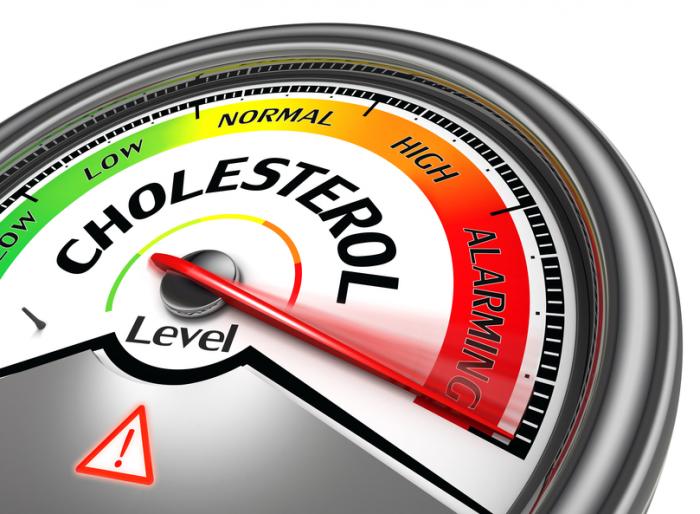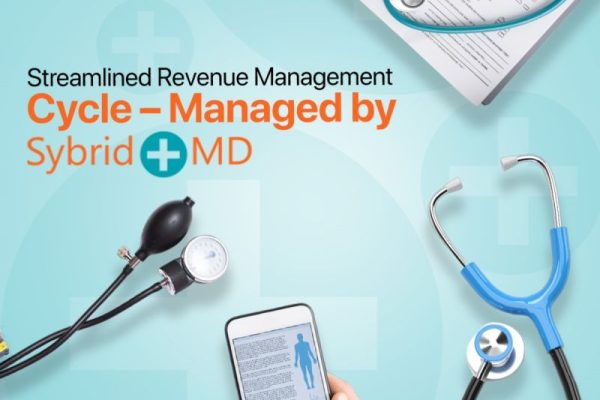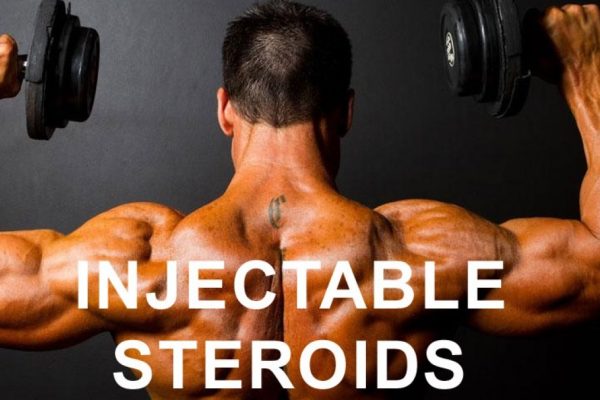Table of Contents
A fatty, wax-like substance is present in all body cells. It is produced and used by the body. We know it by the name of cholesterol. Most of the cholesterol comes from animal-based foods. It is required to make Vitamin D, hormones, and digestive substances. Like any other lipids, it moves through your blood. This article will make you understand the cholesterol levels by age chart.
Cells require cholesterol. It allows the formation of cell membranes for layers. Cell membranes are semi-permeable. They allow certain materials to enter the cell. It also monitors the products leaving the cell. The liver produces cholesterol. At the same time, it uses cholesterol to make bile. This is essential for digestion. Enough cholesterol is required to meet bodily needs. On the other hand, too much cholesterol storage damages health.
Cholesterol levels by age chart, remedies and its effects
Lipoproteins carry cholesterol throughout the body. The lipoproteins types are as follows.
First comes the low-density lipoprotein or LDL. It is of the main lipoproteins. It is generally termed as bad cholesterol.
The second type is high-density lipoprotein. HDL is another primary lipoprotein. This is known as good cholesterol.
Third comes the Very-low-density lipoproteins or VLDL. VLDL are particles in the blood. They carry triglycerides.
Now you may wonder what harm does it do then? The body indeed needs cholesterol. But at times, we do need to worry about it. Too much cholesterol is problematic. You may have a condition, hypercholesterolemia. This occurs in cases of very high cholesterol levels.
Similarly, deficient cholesterol levels may be detected. This is hypocholesterolemia. Usually, low cholesterol levels are rare. People are more prone to high cholesterol levels.
So, what is low-density lipoprotein? More about cholesterol levels by age chart
When we hear the term low, we seem to consider it good. We do not consider it to be wrong. Then why is LDL considered bad? It is all because of the things it does.
Arteries are blood vessels. The blood is rich in oxygen. They carry it away from the heart. It carries blood to different organs in the body. All organs in the body receive the blood.
It tends to build up in the inner walls of the artery. Hence, the diameter of the artery narrows down. The deposits are filled with fat. As a result, they form plaques. It tends to line the arteries. Therefore, blockages result from it. The material that is build-up is atherosclerosis.
The LDL contains certain harmful fats. Besides, these fats are also present in our diet. You should minimize it as much as possible. We must try to avoid these as much as possible. These are saturated fats and trans fats. The saturated fats are wax-like solids. You may find it at room temperature. Saturated fats are common in dairy products—for instance, cheese, milk, meat, and butter.
The trans fats are mostly in a thick liquid form. They can be kept during the hydrogenation process. Here they turn into solids. You will find trans fats in fried foods, junk foods, and so. They extend the shelf life of processed food. Some of them being cookies, crackers, sausages, and salami. Canned foods like canned tuna are high in trans fats. Besides, pickles and jams are high in trans fats.
Now, let’s get an insight into high-density cholesterol.
HDL carries different kinds of cholesterol. It includes LDL. HDL carries them away from the arteries. We can make an easy comparison for better understanding. Consider the HDL as the delivery truck. At the same time, LDL may be considered as a dump truck.
The HDL delivers other types of cholesterol. The liver receives them. Eventually, it removes them from the body. The risk of heart disease reduces when the HDL level increases.
One more thing that you need to know is triglycerides. This is precisely how most of our body fats exist. The levels tend to be higher for diabetic and obese people.
Tests measuring cholesterol levels by age chart
You must check cholesterol levels post 20 years of age. Check it at least once every five years. The health care provider runs a blood test for you. The bloodstream carries all the cholesterol types. The results will indicate the types and amount of cholesterol.
A lipid profile test is a test for checking cholesterol. The medical helper does the lipid panel order. The panel has LDL, HDL, VLDL, and triglycerides. Total cholesterol and non-HDL cholesterol mention are present. The ratio between HDL and cholesterol is also present in the panel.
The test mentioned above is advanced tests. They generally break up the size and shapes of LDL levels. They provide an additional LDL particle number. Typically, they do not order this. The advanced tests are suitable for one reason. They are better at indicating the proneness of heart diseases. However, many doctors prefer the usual tests. Those tests are considered adequate.
Know how to make total cholesterol or blood cholesterol test
A blood test is a routine. The phlebotomist’s job is to draw out blood. He draws blood from the vein in the arm. First, he will wrap a rubber band tightly around your arm. This ensures the blood flow increases when drawing it out. The syringe needle then punctures the vein. This is how the phlebotomist collects blood. The collected blood goes to the laboratory for examination.
Many camps offer free blood tests. Here the blood is drawn from the fingertip. Comparatively, they draw out a minimal amount of blood. A small blade pokes a hole on the tip. This is how they draw out blood.
Preparation for a cholesterol test
It would be best if you were on an empty stomach before testing. A fast of nine to twelve hours is a must. You must be clear to the phlebotomist. Tell him the last time you ate or drank. This does not include water.
However, some cholesterol tests do not require fasting. This happens when the patient is below 20 years of age. They are usually unable to fast. The health screenings also require no fasting.
Different associations and reasonings are available. Many believe fasting to have several benefits. Others think it is unnecessary. They feel lipid profile pictures are clear without fasting. At the same time, some believe it to interpret the risk of heart disease.
Coming to the results
The results of cholesterol tests are available in 48 hours. This is usually the case. Now come to the finger stick and screening tests. Here, the results are available immediately. The healthcare provider will explain the results. The values are in milligrams per deciliter. The abbreviated form is mg/dL.
Home cholesterol kits
Yes, home cholesterol kits are available. They, too, provide accurate results. This is true if they are certified. Check the label ‘’CDC-certified’’. Only then can it be authentic. This means the contents have the right approval. The Cholesterol Reference Method Laboratory Network approved this. They work with test makers and laboratories. The Centre for Disease Control and Prevention works with them. Jointly, they ensure the accuracy of the tests.
The procedure is still the same. Fast for 12 hours. Then obtain the blood for testing. The kit packages come through the mail. After filling it up, the package is sent back for results. Some kits come with monitors. The results will be available at home. However, home kits vary in cost.
Cholesterol levels by age
Normal cholesterol levels are different. They differ by age and sex. The cholesterol levels by age chart are given below.
Let’s begin with normal cholesterol levels. The age ranges are 19 years and below, 20 years and above for men and women. The chart shows the respective cholesterol types. Each type indicates the optimum levels.
FIG: TARGET CHOLESTEROL LEVELS BY AGE CHART
| AGE AND SEX | TOTAL CHOLESTEROL | NON-HDL CHOLESTEROL | LDL CHOLESTEROL | HDL CHOLESTEROL |
| PEOPLE AGED 19 YEARS AND LESS | IT IS LESS THAN 170 mg/dL | LESS THAN 120 mg/dL | LESS THAN 110 mg/dL | More than 45 mg/dL |
| MEN AGED 20 YEARS AND ABOVE | 125-200 mg/dL | LESS THAN 130 mg/dL | LESS THAN 100 mg/dL | 40 mg/dL ABOVE |
| WOMEN AGED 20 YEARS AND ABOVE | 125-200 mg/dL | LESS THAN 130 mg/dL | LESS THAN 100 mg/dL | 50 mg/Dl and above |
Coming to the LDL, non-HDL, and high total cholesterol. The high levels vary by age and sex. Besides, more differences may be present due to heart diseases. The guidelines are given below. You can follow the chart only in the absence of any heart diseases. The borderline levels for each type are mentioned. Besides, you see the higher levels.
First comes the cholesterol chart meant for adults.
| CHOLESTEROL LEVELS | TOTAL CHOLESTEROL | LDL CHOLESTEROL | HDL CHOLESTEROL | TRIGLYCERIDES |
| GOOD | LESS THAN 200 mg/dL | 60 mg/dL IS IDEAL; 40 mg/dL AND HIGHER FOR MEN; 50 mg/dL and higher in women | LESS THAN 100 mg/dL; LESS THAN 70 mg/dL IN CASE OF CORONARY ARTERIAL DISEASE | IT IS LESS THAN 149 mg/dL |
| BORDERLINE – MODERATELY ELEVATED | 200-239 mg/dL | N/A | 130-158 mg/dL | 150-199 mg/dL |
| HIGH | 240 mg/dL | 60 mg/dL AND ABOVE | 160 mg/dL AND HIGHER | 200 mg/dL AND HIGHER |
| LOW | N/A | 40 mg/dL AND LOWER | N/A | N/A |
The Journal of the American College of Cardiology or JACC issued some guidelines. The publication was in 2018. This guideline is to manage the blood cholesterol level. The chart 1`above shows measurements at fasting. The values are in mg/dL.
| CHOLESTEROL LEVELS | TOTAL CHOLESTEROL | LDL CHOLESTEROL | HDL CHOLESTEROL | TRIGLYCERIDES |
| GOOD | 170 mg/dL AND LESS | MORE THAN 45 mg/Dl | It is Less than 110 mg/Dl | LESS THAN 75 mg/dL IN CHILDREN AGED 0-9 YEARS; LESS THAN 90 mg/dL IN CHILDREN AGED 10-19 YEARS |
| BORDDERLINE | 170-199 mg/dL | 40-45 mg/dL | 110-129 mg/dL | 75-99 mg/dL IN CHILDREN AGED 0-9 YEARS; 90-129 mg/dL IN CHILDREN AGED 10-19 YEARS |
| HIGH | 200 mg/dL AND HIGHER | N/A | 130 mg/dL AND HIGHER | 100 mg/dL IN CHILDREN AGED 0-9 YEARS; 130 mg/dL IN CHILDREN AGED 10-19 YEARS |
| LOW | N/A | LESS THAN 40 mg/dL | N/A | N/A |
This is a chart for children. Yes, children are prone to high cholesterol levels. The levels require control at a young age. Otherwise, the cholesterol levels will be out of control. The levels here are based on the JACC publication.
How to treat high levels of cholesterol
Home remedies! Yes, our daily lifestyle impacts our cholesterol levels. Significantly few natural products reduce cholesterol. Heart diseases can be natural or complementary. They usually aim at controlling levels of cholesterol.
The doctor prescribes medication for reducing cholesterol levels. They may be as follows.
Statin is common as a cholesterol drug. They reduce the cholesterol produced in the liver. Hence the risk of heart attacks is less. This is widely prescribed to treat high cholesterol levels.
Bile acid sequestrants
It acts as resin. They bind to bile acid. This prevents its digestion process. Hence more bile acid formation occurs. This leads to the usage of more cholesterol. However, this medicine has some side effects. It causes constipation and stomach ache. Hence this drug recommendation is not for everyone.
Next comes fibrates. They are derivatives of fibric acid. They aim at cutting down the triglyceride levels. Besides, they boost HDL levels.
Consult a doctor before using any alternative remedy. Let’s discuss the home remedies.
Garlic
Let us begin with the most common item. Garlic is available in all households. You can eat it raw. It is even used in cooking. You may take it as a supplement. Capsule forms are also available.
Garlic is common for reducing high blood pressure. It also prevents atherosclerosis. But did you know it reduces high cholesterol levels? You may consume garlic for about one to three months. It will keep the cholesterol level in check.
Omega-3 fatty acids
These are high in fish and fish oils. It is rich in fatty fish. Tuna, salmon, trout, herring, and sardine fishes are its rich sources. The Mayo Clinic experts conducted a series of studies. They believe the risk of death by heart diseases reduces.
Do not worry if you are vegan or vegetarian. Here are some plant alternatives. These two are rich in fatty acids—for instance, canola oil, walnuts, soybeans. You may try the fish oil supplements as well.
Flaxseed
It is plant-based. The seed and its oil are rich in linolenic acid. ALA helps in the reduction of high cholesterol levels. It is a supplement of omega-3 fatty acid.
The studies indicate mixed results. Some term it as beneficial for cholesterol reduction. This is true, especially for women with menopause. Flaxseeds are not hard to find. You may find it at local grocery stores. Or you may find it online.
Supplements like plant stanol and sterol
They are found in many fruits, vegetables, seeds, grains, and nuts. It is also rich in processed foods. Yogurt products, margarine, orange juice are some examples. It prevents the small intestines from absorbing cholesterol. Further, it lowers harmful cholesterol levels. In other words, LDL level reduction occurs.
Hawthorn
This shrub has relations to the rose. It is famous since the Roman empire. They treated heart diseases using its berries, flowers, and leaves. Some studies show it to be effective. They may treat mild heart diseases. Despite the conflicting results, the use is intact. The supplements are available online.
Astragalus
It is a herb supporting the immune system. This herb comes from traditional Chinese medicines. It is an ‘’adaptogen’’. Astragalus has anti-inflammatory properties. Besides, it is antibacterial as well. Hence it reduces stress in the body. Limited studies indicate its effectiveness on heart health.
Red yeast rice
This is another traditional medicine. It originates from China. Culture the red rice with yeast. Hence the name, red yeast rice. It is a cooking ingredient. Red yeast rice has monacolin K in abundance. It is similar to a chemically-active ingredient, lovastatin. It is a cholesterol-reducing drug.
However, some may contaminate. Citrinin is the contaminant. This may lead to kidney failure. Hence it is hard to distinguish between the products. Some may have citrinin. At the same time, others may have monacolin K.
Every natural remedy has its pros and cons. You may have access to these without medical help. However, a proper treatment plan is necessary. There are very few studies proving its importance. They are mostly unregulated. The side effects are unknown.
Modifications in the lifestyle
First, try to change your eating habits. Limit intake of trans fats and saturated fats. Eat heart-healthy food. Fruits, green vegetables, nuts, and seeds are some of them. Whole grains, poultry, and fish are among others. Try to omit dairy products and sugary foods altogether. Cut back on fried and processed food. Most importantly, limit red meat in the diet. Second, quit tobacco altogether. It will benefit your heart. This will reduce the high cholesterol level.
Third, try to indulge in physical activities—for instance, swimming, cycling, running, or intense walking. You any even try out any workout routine. Work out for 15 minutes to 30 minutes. Try to do so at least 3 to 5 times a week. Try to be consistent. It is one of the surest forms to control cholesterol levels. Eating habits still tops the list.
Keep your weight in check. For obese people, it is crucial to maintain a healthy weight. Eating healthy and working right may work. You may consult any nutritionist for further help. A gym instructor will be of great help.
Maintaining the blood sugar levels
Next, maintain your blood sugar level. Alongside, try to keep the blood pressure level intact. Finally, try your best to reduces stress. Learn to deal with stressful situations. Understand that you have control over your mind and body. Hence, never avoid them. Try to deal with negative emotions. Following this advice will surely do you good.
Bad cholesterol can be too low. In the same way, good cholesterols may be too high. However, these extremes are not much beneficial.
The exact value is not known to date. However, the value of LDL must not fall below 40 mg/dL. This may cause specific health issues. For instance, stroke, brain hemorrhages, anxiety, and depression. Some studies show no harm at low levels. This is true if the person is under statin therapy.
Low cholesterol levels may occur due to genetics. Infections, chancers, hyperthyroidism may cause high cholesterol. Address the underlying issues first. This will help you get a better treatment plan. Coronary Artery Disease or CAD is one of them.
Concluding
With no treatment comes more complications. High cholesterol levels need immediate treatment. This is the only way to reduce coronary heart disease. The blood may not be rich in oxygen. This deteriorates the proper functioning of the arteries. Coronary microvascular illness may also occur. It damages the small blood vessels.
The main aim of checking the levels is to treat the heart.
Plaque elimination is crucial. The plaque is the cholesterol deposits from the coronary arteries.
Researchers are trying to devise new methods. Statins and PCSK9 administration together can work. This is true in the case of healthy people. The age range is 20 years to 55 years of age. This will allow the arteries to clear up. Gradually the arterial walls will heal over time.
Consume whole foods. A plant-based diet reduces cholesterol levels. Hence it reduces the formation of plaques.











